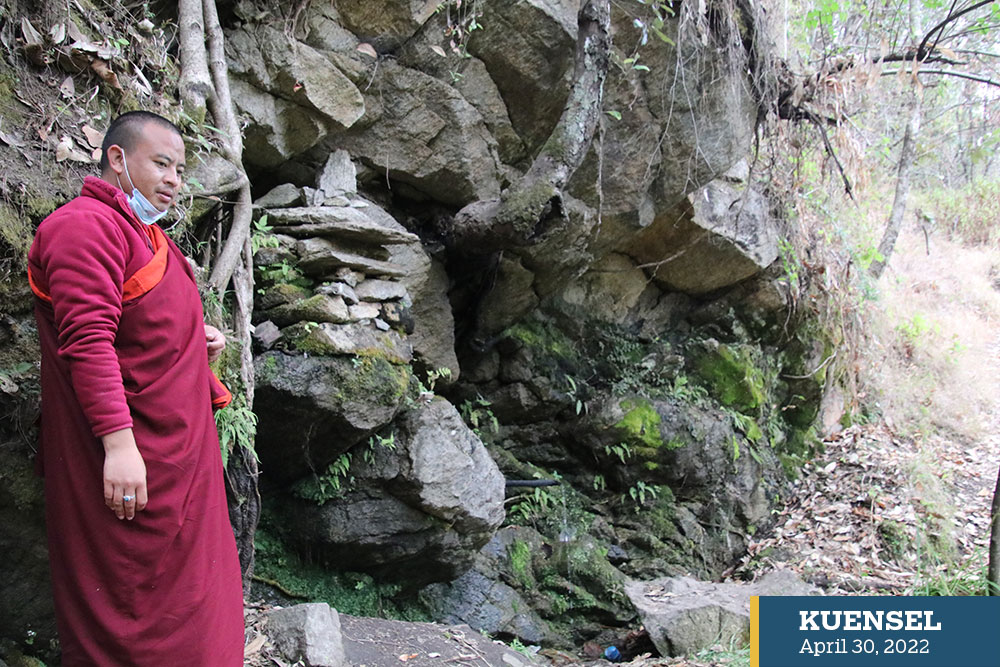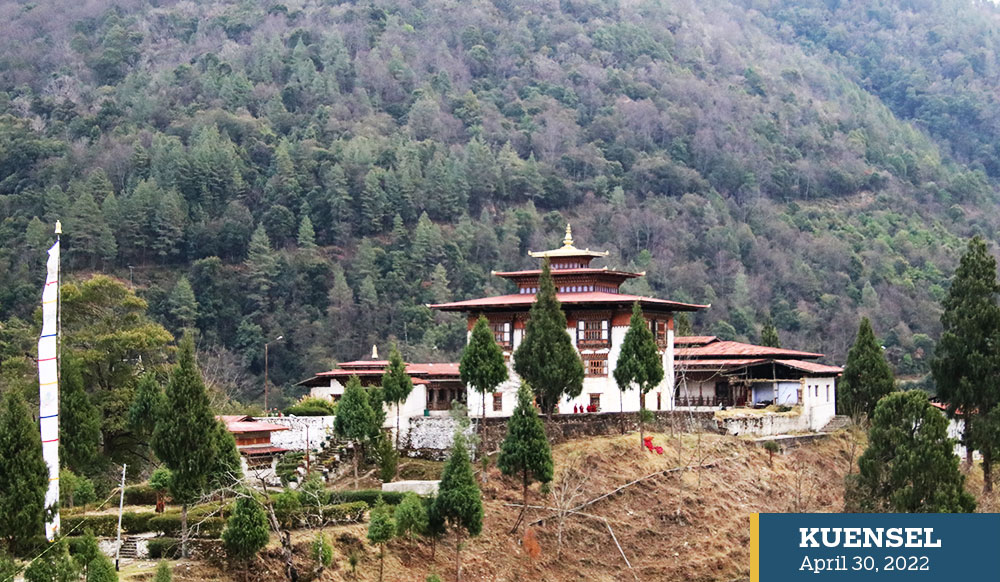Nima Wangdi | Trashiyangtse
Reaching Langla from Trashigang, towards Trashiyangtse, a majestic dzong can be seen through the tall trees. Many people wonder what it is.
It is the old dzong of Trashiyangtse, commonly known as Dzong Manmo among Yangtseps.
It stands on a ridge between Kholongchhu and Dongdichhu, about two kilometres from the highway across the Kholongchhu.
This was the place from where Trashiyangtse drungkhag was administered by the drungpas before Trashiyangtse dzongkhag was created. It was a drungkhag under Trashigang dzongkhag then.
Today, the dratshang occupies this dzong; the dzongkhag administration is established at the present dzong.

Pemalingpa Drupchhu
Rabdey’s Umzey (chant master), Kinzang Choeten, said that the dratshang was established in 1999 coinciding with His Majesty The Fourth King’s 25th year on the golden throne.
He said that the dzong was initially called Dong-ti Dzong, which literally means ‘We shall meet’ in Yangtsep dialect. Today, it is known as Dongdi Dzong.
“Those days, the people of Kurtoe (Lhuntse) and Yangtse would make appointments to meet at the place where the dzong stands today. Yangtseps had their relations in Kurtoe,” Kinzang Choeten said.
Dongdichhu separates three villages – Zhadhi, Lichen, and Dalimang. Across the Dongdichhu is Dongdizam through which the people of these villages came to the dzong.
Past these villages and higher up is the Donglumneng and the mountain that separates Yangtse from Kurtoe, called Dongla.
Kinzang Choeten said there is no record to establish when and who built the dzong. The documents were burnt down when the dzong was razed to the ground by fire many years ago. “The present dzong was reconstructed later.”
Dongdi Dzong is three-storey high. The first floor accommodates store, the administrative office in the first floor, Pel Yeshi Goenpo’s Goenkhang, and Chuchizhey Lhakhang on the top.
Kinzang Choeten said the main relic of the Lhakhang is the one and a half feet tall Chuchizhey (Avalokiteshvara).
“It is said that the Chuchizhey fled to Chembra, a cliff on the other side of the dzong when the dzong caught fire. The people working in the dzong did not know where the statue was but they saw a light glowing at Chembra during the nights,” Kinzang Choeten said. “People found the statue sitting there. He was brought back.”
It is believed that Mipham Tenpei Nyima, Zhabdrung Rinpoches’s father, also visited the dzong.
He said the place where the dzong stands today is considered to be an abode of Chuchizhey (Riwo Potala) and the two rivers signify the water offering (Yonchab) to the dzong.
The dzong is only four kilometres away from the Yangtse town.
According to some records, the dzong used to be called Dongdi Dzong because Dongdichhu flows on its right from the Dongla direction.
Some believe that it was Gongkar Gyalpo, son of Lhasey Tshangma, who built the dzong but the Tibetan invasion forced the people of Donglum flee.
Kinzang Choeten said that the ruins of Donglum could still be seen today.
Sources say that it is Tertoen Pema Lingpa who built the dzong in the 14th century and named it as Trashiyangtse Dzong. “It is also believed that Dongdi Dzong was one of the six dzongs that were constructed by the 3rd Desi, Chhogyal Minjur Tempa.”
On the slope, towards the Kholongchhu is the Neypoi Phodrang (Shrine of the local deity).
The Taa Dzong can still be seen a few metres above the dzong.
People say the ruins of the Chudzong on the slope towards Dongdichhu were lost to the road construction in the recent years.
Trashiyangtse became a separate dzongkhag in 1992.
The dzong was renovated and sanctified by His Holiness the Je Khenpo Trulku Jigme Choeda in 2005.


